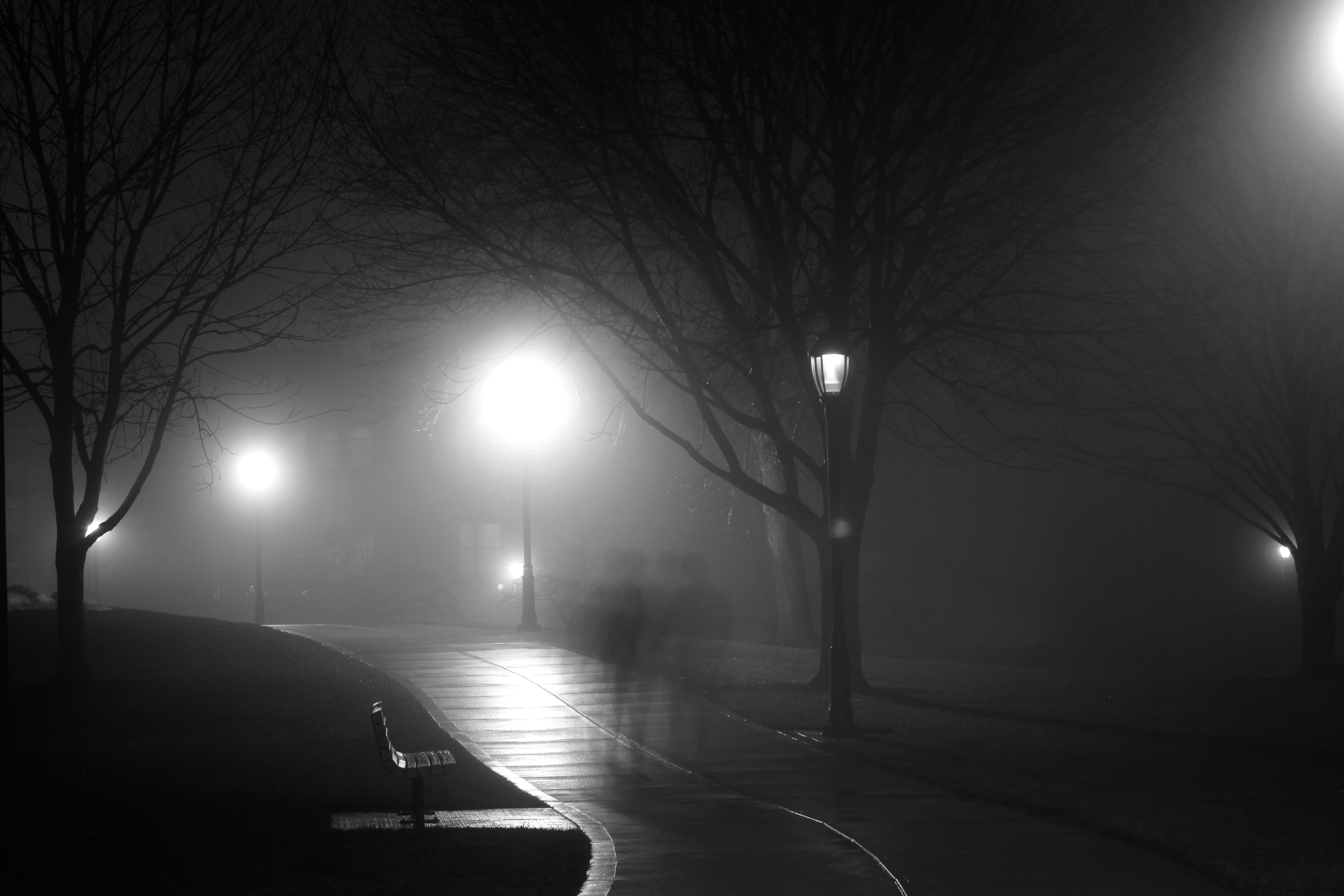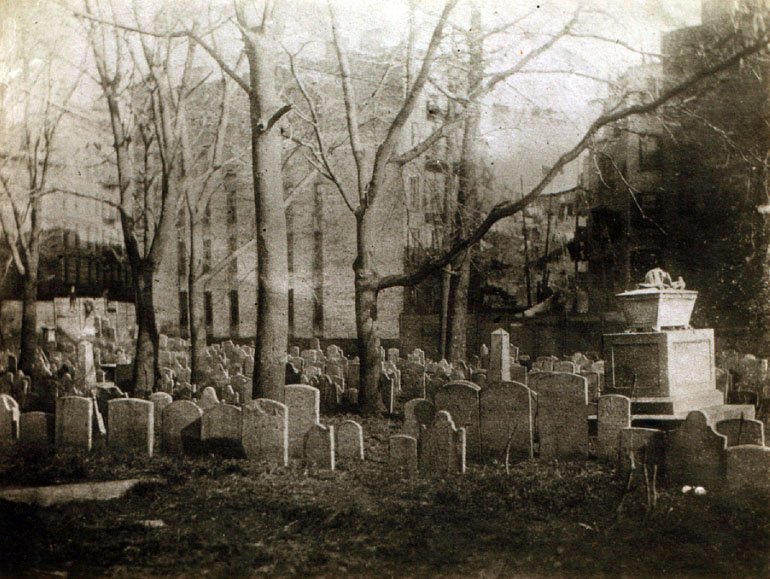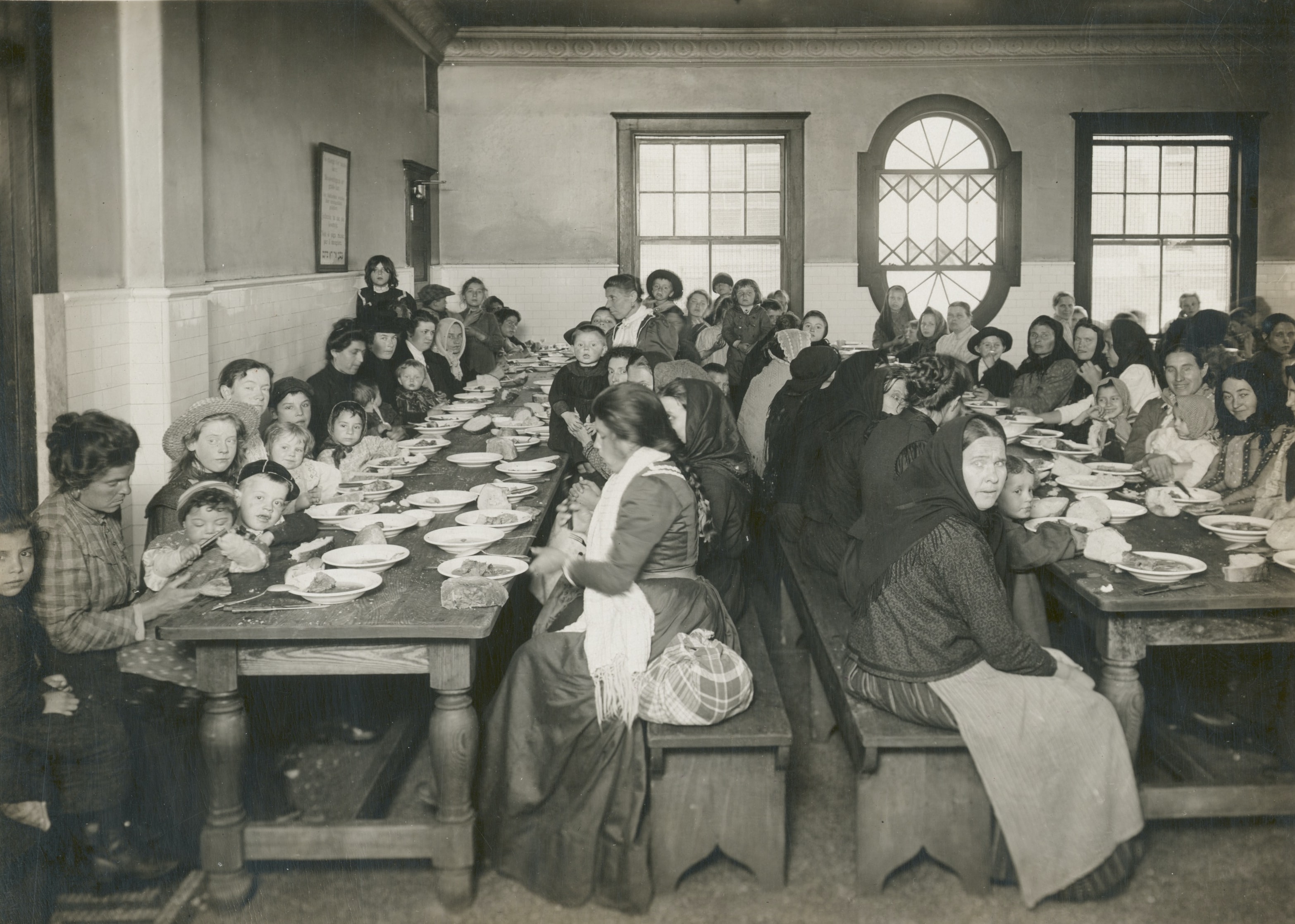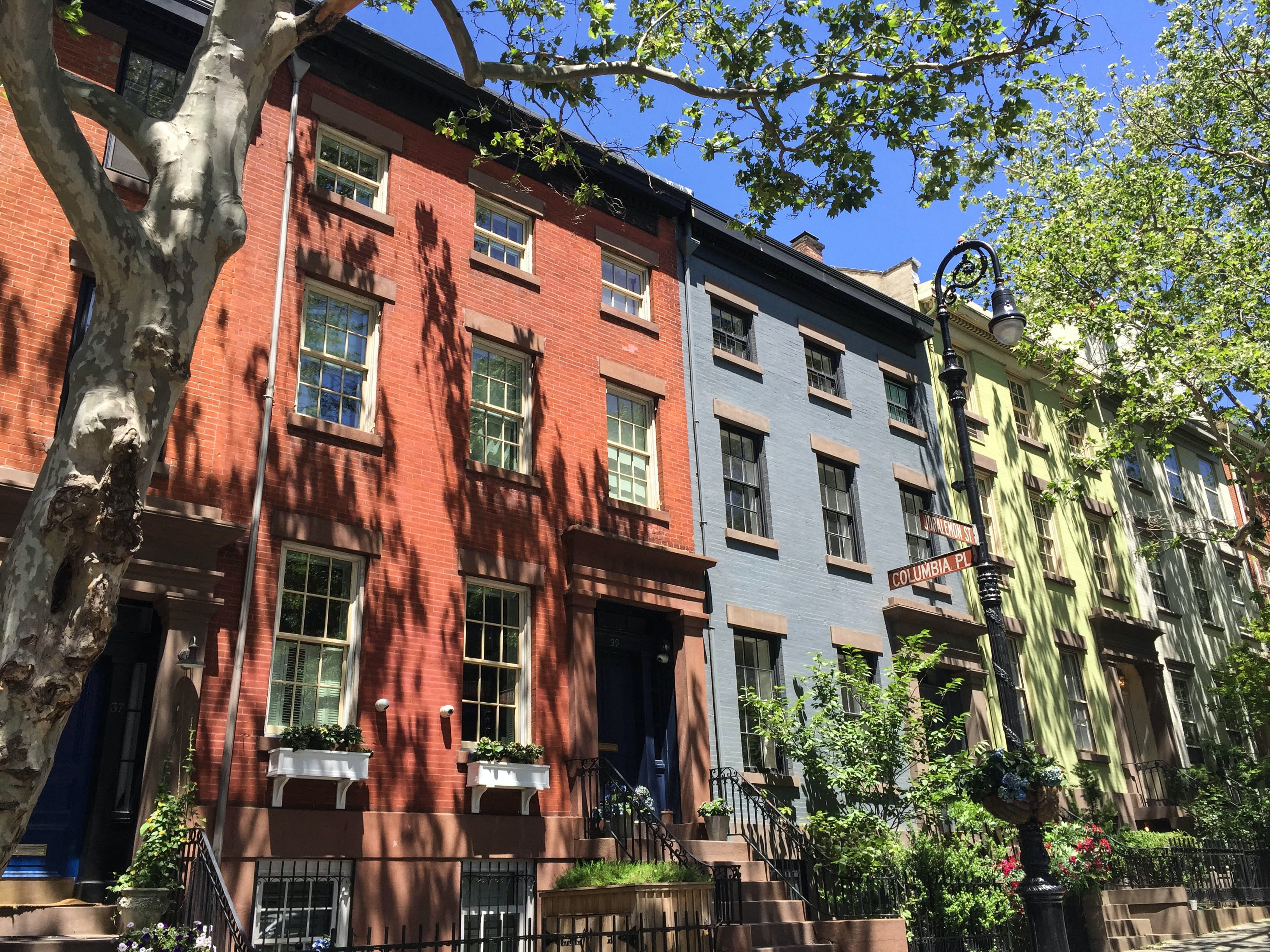
It’s the most wonderful time of the year. No, I don’t mean Christmas, even though the isles of Target have been sneaking out Santa stuff since September. PUT IT AWAY, TARGET! IT’S NOT EVEN TURKEY DAY YET!
I mean Halloween, spooky season, All Hallows Eve.

There are endless things to do, some of them headless 🎃
But, for the brave ones who like to linger after dark in the graveyards or visit abandoned budlings and gaze into abandoned windows, here are some morbid histories of NYC.
It should be noted that anyone can slap a ghost story onto a building. For example, Washington Square Park paved over an old pauper’s graveyard, and 20,000 bodies lay beneath the stones. Reports say there’s a particular spirit seen lurking at the Northeast corner.
Or another example is old taverns like Fraunces Tavern or the White Horse Tavern. People claim to see George Washington and other Revolutionary War Era ghosts at Fraunces Tavern. Stories say that Dylan Thomas drank 18 whisky shots at White Horse Tavern. He died shortly later, but his ghost still lurks. However, these buildings were all frequented by famous people over the years. Also, these buildings are all over 100 years, which is ancient in the United States. It’s easy for a tour guide to slap on a ghost story and call it a day.
Now, that’s not to diminish the ghosts of NYC. We have some genuinely chilling stories and places of actual death.
Ghost Ship of Brooklyn
The Brooklyn Navy Yard was once a bustling port of trade and commerce. Today commercial industries such as a film studio and a distillery fill the space. It is peaceful and masks the horrid history.
During the American Revolutionary War, NYC was under British Occupation. The British army sent prisoners of war to the city for detainment. The city turned sugar houses into jails to accommodate them but quickly grew overcrowded. To fix the problem, the British converted old merchant ships into prisons. (I’ve got to give it to the British. They sure know their way around ships). The British crammed hundreds of men and boys onto these ships, where they anguished and died. Reports of hellish conditions aboard the ships abounded at the time. Peopled called them “ghost shops” or “floating dungeons.”

The British locked prisoners in the hold, with no room to lie down and only moldy food to eat and brackish water to drink. The toilets were in barrels, and the air was so thick that candles could not light the dark holds. Scholars believe 6-12 people died daily. If smallpox, typhoid, or yellow fever didn’t kill them, then violent guards, starvation, or dehydration would. Contemporary reports estimated over 11,5000 people died. This number is greater than any battle casualties during the war.
Headless Actor
Saint Paul’s is the oldest standing church in NYC and one of the coolest places in the city. The headless ghost of English Actor George Fredrick Cooke, only makes it better.
Cooke was a successful English Actor in the late 18th century. He decided to do another tour in the newly independent America in 1810. There, he had a successful run of Richard III in NYC and toured the North East. The outbreak of the War of 1812 stranded Cooke in America. Cooke died from complications of cirrhosis the same year. Before he died, he had been an alcoholic and deeply in debt.
He was a celebrity which made his corpse exciting. Supposedly a fellow actor stole a toe or finger and sent it back to his wife. Eventually, Cooke’s body was moved to a public grave at Saint Paul’s Chapel, but it was missing the head. The story states that Cooke needed money to pay off his creditors and donated his head to science.

Edmund Keane, Cooke’s protégé, funded a reburial in 1821. The rumors at the time were that productions of Hamlet were using Cooke’s skull in Hamlet. In 1938 the skull was donated to Thomas Jefferson Medical School Library in Philadelphia.
People have reported seeing a headless specter in the graveyard at Saint Paul’s. Perhaps Cook is searching for his head. I hope Cooke can find some peace knowing that his head continued to be part of theatre for almost a century later.
Manhattan Well Murder
Take a walk by 129 Spring Street, and you will see a very average building. However, this is the site of the infamous Manhattan Well Murder of 1799. On December 22, Elma Sands left her cousin’s boarding house and no one saw her after. A few days later, a neighbor was drawing water from the well at current day 129 Spring Street and found the bloated corpse of Elma Sands. The doctors who examined the body declared that Sands had been strangled, and thrown into the well, where she cracked her skull and drowned.
The suspect was her lover, Levi Weeks. The family tried to shame Weeks by placing the coffin outside the boarding house. Richard Croucher, a fellow boarder, printed pamphlets accusing Weeks of the murder. Then the public discovered that Weeks and Sands had planned to elope the night of her murder. Weeks was arrested for murder. What followed was the first murder trial in the newly formed America. Levi Weeks was defended by one lawyer who owed his brother Ezra and another lawyer who owned the well…Alexander Hamilton and Aaron Burr. The two advisories teamed up to defend Weeks. The trial was as big and as famous as the O.J. trial.

Hamilton and Burr quickly discovered that Weeks had an alibi. He couldn’t have committed the murder. They turned their attention instead to Richard Croucher. However, Croucher had left the city a year earlier. He was never proven guilty of the crime, though he was executed in England for strangling a woman. Weeks was acquitted. But the strange disappearances and deaths of the defense team fueled rumors about a curse.
Catherine Ring, Elma Sand’s cousin, shouted after the trial, “If thee dies a natural death, I shall think there is no justice in heaven!” Weeks ran to Mississippi to escape the New Yorkers harassing him and was never heard from again. Judge Lansing disappeared. Burr shot Hamilton. Burr then suffered tragedy after tragedy.
The well was forgotten about and eventually built over. In 1990 the restaurant at 129 Spring Street decided to expand and discovered the well. Reports about a ghostly watery woman harassing the male employees exploded. Elma’s been quiet now that the building is a clothing store, but she cannot have gone far.
Melrose Manor
This one is more of a ghost story than it is absolutely historical, but it is a beautiful Brooklyn tale that mingles truth. Melrose Hall and estates used to occupy land in Flatbush, Brooklyn. It was a pretty house, but the twisted passageways, winding staircases, and odd-shaped rooms cast a sinister glare over the home. Colonel William Axtell, a Tory, owned the manor during the American Revolution. The rumor was that he built secret chambers to hide his Tory friends and dungeons to imprison rebels. The house is home to the “largest assortment of the most gruesome [sic] ghost stories of any house in the state.”
This is where the story varies. Axtell had a mistress. Some say it was his sister-in-law Alva. Other stories say Isabella was the name of the mistress. And others say it was an Indian Princess who saved him named Isabella. Regardless, Axtell built a secret chamber and hid his mistress inside. The chamber was above the ballroom and outfitted with the finest luxuries.

One of Axtell’s slaves was tasked with caring for Isabella/Alva. The enslaved woman (sometimes called Miranda) was the only other person to know of the mistress. War duty called Axtell away. While he was gone, Miranda died. Inevitably so did Isabella/Alva. When he returned, his friend threw a party, but Axtell could only think about his lover. When he learned that the slave had died, he panicked. Suddenly the specter of his lover appeared in the ballroom. The ghost story ends with Axtell dying right after, but in reality, he returned to England.
Some say they found a skeleton in a secret room above the ballroom, but it’s just a story. The only real truth to back any of this up is in the late 1800s, during demolition, people found secret chambers with chains from the walls, which brought credibility to the rumors about dungeons. By 1901 the mansion was abandoned. It became a playground for children and ghost stories continued to grow around it. Eventually, developers tore it down.
This is just a hasty retelling of a fascinating story. I recommend checking out this four-part article if you want the extended version.
However you choose to spend the spooky season, give a little thought to the ghosts that haunt the streets. Leave some candy out for them to munch on.
If you are someone who likes a good walking tour, and can’t get enough spooky, be sure to check out the Spirit, Specters, and Haunts of NYC’s West Village Tour offered by Tawk of New Yawk.




